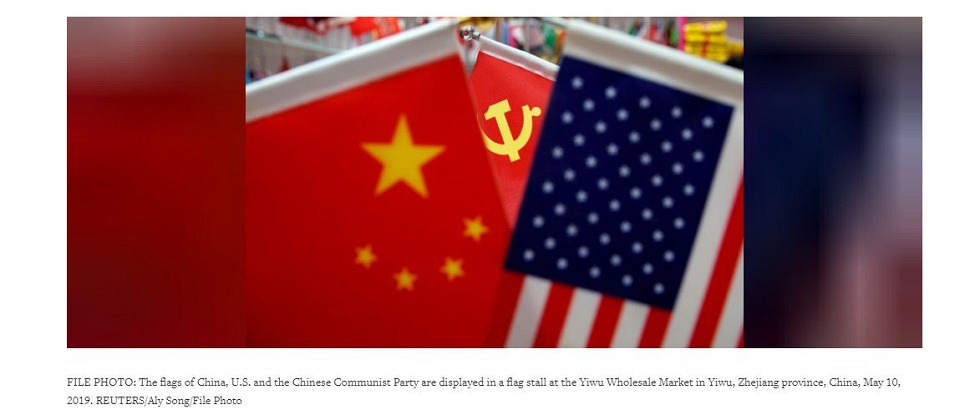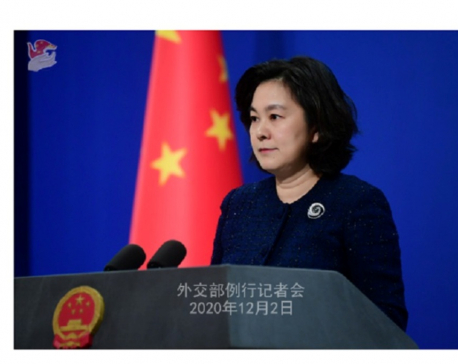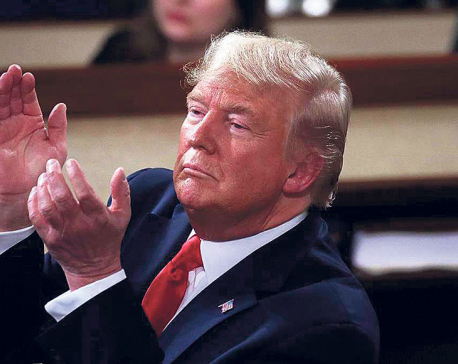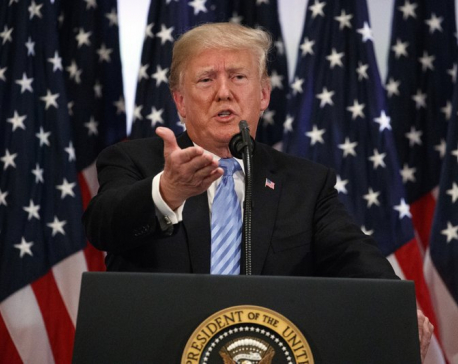
OR

WASHINGTON, July 24: A U.S. demand that China shut its Houston consulate is the latest chapter in a dramatic worsening of ties between the world’s two biggest economies over the last two years.
Here is a timeline of some key developments:
2018
Jan. 22: U.S. President Donald Trump imposes tariffs on all imported washing machines and solar panels, including from China.
March 8: Trump orders 25% tariffs on steel imports and 10% on aluminum from all suppliers including from China.
April 2: China imposes tariffs of up to 25% on 128 U.S. products including airplanes and soybeans.
April 3: Trump unveils plans for 25% tariffs on about $50 billion of Chinese imports.
Aug. 22: A New York court issues an arrest warrant for Meng Wanzhou, chief executive of telecoms equipment company Huawei Technologies, to stand trial in the United States.
Sept. 24: 10% tariffs on $200 billion of Chinese imports kick in. The administration says the rate will increase to 25% on Jan. 1, 2019. China taxes $60 billion of U.S. goods.
Dec. 7: Court proceedings show the United States has issued an arrest warrant for Meng Wanzhou as it believes Meng covered up attempts by Huawei-linked companies to sell equipment to Iran, breaking U.S. sanctions against the country.
2019
Aug. 1: Trump announces 10% tariffs on $300 billion in Chinese imports, after two days of talks with no progress.
Aug. 5: China halts purchases of U.S. agricultural products, and the Chinese yuan weakens past the key seven per dollar level. The U.S. Treasury says China is manipulating its currency.
Aug. 13: Trump postpones some of the 10% tariffs on the $300 billion goods list until Dec. 15.
Aug. 23: China announces additional retaliatory tariffs on about $75 billion worth of U.S. goods.
Sept. 20: U.S. Trade Representative issues tariff exclusions on about 400 Chinese products.
Oct. 7: The U.S. Commerce Department puts 28 Chinese companies on its “entity list,” restricting the sale of U.S. goods and technology to them over their alleged involvement in human rights abuses against Uighur Muslims in Xinjiang. China says the United States should stop interfering in its affairs.
Oct. 11: After two days of high-level talks, Trump announces a Phase 1 deal that includes suspension of planned tariffs and a Chinese pledge to buy more farm goods.
ADVERTISEMENT
2020
Jan. 11: A 61-year-old Chinese man is reported to have died in Wuhan from what preliminary lab tests cited by Chinese state media suggest is a new type of coronavirus.
Jan. 27: The United States warns against travel to China, a day after five people who had been in Wuhan become the first confirmed cases in America.
Feb. 1: The United States, Singapore, Russia and Australia ban foreign travelers who were recently in China.
March 17: China withdraws the press credentials of American journalists at three U.S. newspapers.
May 28: China’s parliament overwhelmingly approves imposing national security legislation on Hong Kong to tackle secession, subversion, terrorism and foreign interference. Trump orders his administration to begin the process of eliminating special U.S. treatment for Hong Kong, but stops short of calling an immediate end to privileges that have helped the territory remain a global financial center.
June 22: The United States says it will start treating four major Chinese media outlets as foreign embassies, alleging they are mouthpieces for Beijing. The designation requires the outlets to inform the U.S. State Department of their personnel rosters and real-estate holdings.
July 1: U.S. Secretary of State Mike Pompeo calls Hong Kong law an affront to all nations and says Washington will pursue Trump’s directive to end the territory’s special status.
July 1: China asks four U.S. media organizations to submit details about their operations in the country in what it describes as retaliation for U.S. measures against Chinese media outlets.
July 13: The United States rejects China’s claims to offshore resources in most of the South China Sea, drawing criticism from China which says the U.S. position raises tension in the region. Brunei, Malaysia, the Philippines, Taiwan and Vietnam challenge China’s claim to about 90% of the sea.
July 22: The United States tells China to close its consulate in Houston, and a source says Beijing is considering shutting the U.S. consulate in Wuhan in retaliation.
July 23: Secretary of State Mike Pompeo accuses the Chinese consulate in Houston of being a spying hub of “intellectual property theft” and calls on U.S. allies to pressure China.
You May Like This

China says U.S. should stop abusing the concept of national security
BEIJING, Dec 4: China said on Friday it firmly opposes the United States’ wanton oppression of its companies and asked... Read More...

Trump cuts WHO funding over coronavirus, global death toll mounts
WASHINGTON/SYDNEY, April 15: U.S. President Donald Trump on Tuesday halted funding to the World Health Organization over its handling of the... Read More...

US withdraws from two international accords, says UN World Court ‘politicized’
WASHINGTON, Oct 5: The Trump administration pulled out of two international agreements after Iran and the Palestinians complained to the International... Read More...

Just In
- Indians vote in the first phase of the world’s largest election as Modi seeks a third term
- Kushal Dixit selected for London Marathon
- Nepal faces Hong Kong today for ACC Emerging Teams Asia Cup
- 286 new industries registered in Nepal in first nine months of current FY, attracting Rs 165 billion investment
- UML's National Convention Representatives Council meeting today
- Gandaki Province CM assigns ministerial portfolios to Hari Bahadur Chuman and Deepak Manange
- 352 climbers obtain permits to ascend Mount Everest this season
- 16 candidates shortlisted for CEO position at Nepal Tourism Board






_20220508065243.jpg)











Leave A Comment